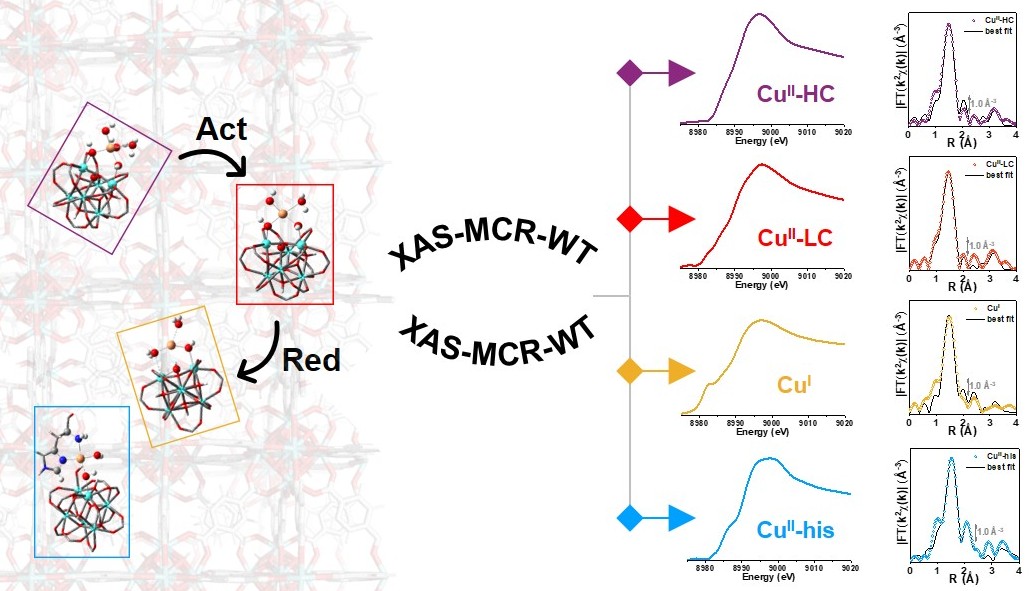Journal of Physical Chemistry C – Beatrice Garetto, Ning Cao, Valeria Finelli, Erlend Aunan, Matteo Signorile, Unni Olsbye, Silvia Bordiga, Ainara Nova, Elisa Borfecchia.

In recent years, X-ray absorption spectroscopy (XAS) has emerged as an
essential technique for investigating the structure and composition of heterogeneous
catalysts, providing valuable insights into the nature of active sites within these systems.
However, the average nature of the XAS signal, inherently merged over all the absorber-
containing species forming during in situ/operando experiments, often complicates the
interpretation of the data. Nonetheless, advanced analysis methods have been developed
to address this problem. In particular, herein we employed in situ XAS spectroscopy
together with multivariate curve resolution-alternating least squares (MCR-ALS) and
wavelet transform (WT) analysis to monitor the evolution of distinct Cu species in histidine-
modified Cu-UiO-66 MOFs and to obtain detailed structural insights about the Cu sites. A
novel approach adopted in this work was the application of density functional theory
(DFT)-assisted extended X-ray absorption fine structure (EXAFS) fitting to quantitatively
refine the local structure of the MCR-derived pure Cu species. This approach revealed the
preferential redox activity of CuII ions coordinated within the defective Zr clusters of the
MOF, compared to CuII ions bound to both the histidine molecule and the defective site
during a standard redox reaction protocol.
Click here for the complete article!